Nintendo

The current incarnation of the video game industry recognizes something called "The Big Three": the three major console makers responsible for the home gaming market. There's Sony PlayStation, Microsoft Xbox, and the oldest of them all and the reigning king for many gamers: Nintendo.
Nintendo as a company has been around in some form for over 130 years, so they definitely know a thing or two about business. It's the home to some of gaming's most beloved franchises, most iconic hardware, and best video game experiences. The company's combined efforts across game development, hardware, and merchandise has resulted in a total net worth of roughly $95 billion, but when you're talking about the company responsible for globally recognized IP everyone loves to play including Mario, Donkey Kong, and The Legend of Zelda, that should come as no surprise.


Sell & Payout


What is Nintendo?
Nintendo is a primarily Japanese video game company. It was originally founded in 1889 as Nintendo Koppai, a company whose main business was producing playing cards. As decades passed, Nintendo got into producing other toys like light gun peripherals in the 70s, which set them up to break into video games. When they introduced the Donkey Kong arcade game, a revolution in its time, their fate was sealed.
Fast forward 40+ years, and Nintendo is still cranking out banger after banger. By choosing to prioritize "fun" over tech and graphics, they are able to consistently produce memorable games without compromising their company vision. Also, by maintaining their image as the "family-focused" console maker, every Nintendo product released appeals to just about every demographic.
It goes without saying that Nintendo's hardware legacy has been incredibly influential to the industry at large. Here's a brief overview of Nintendo's home entertainment offerings throughout time.
History of Nintendo Consoles
Nintendo is perhaps known just as well for their home consoles as they are for their handhelds, so this next section will be split into two parts representing the evolution of each fork of the company's hardware development.
Home Consoles
1985 - Nintendo Entertainment System (NES)
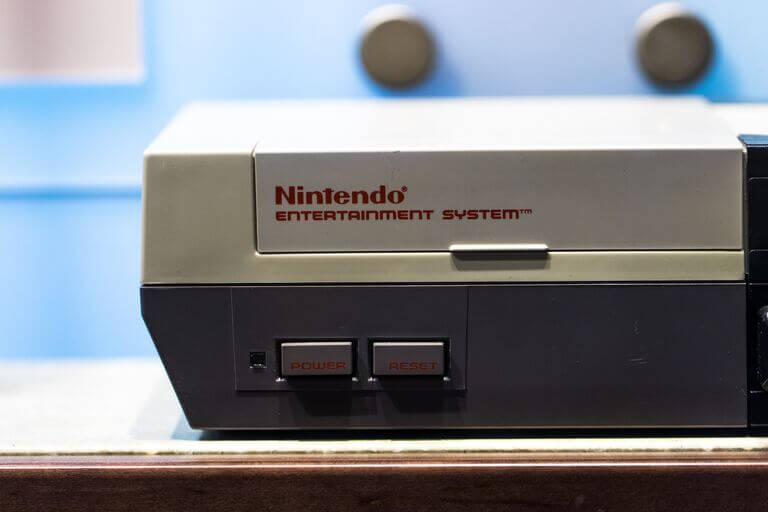
Nintendo's first major console and the one that made them a household name all over the world. Having arrived after the infamous video game crash of 1983, the NES helped to revive the industry and show people that there was still some life in it. The console went on to sell over 61 million units and introduced an entire generation to gaming's most recognizable icons.
Some iconic games from this generation:
Super Mario Bros.
Punch-Out
Kirby's Adventure
Donkey Kong
Metroid
1991 - Super Nintendo Entertainment System (SNES)
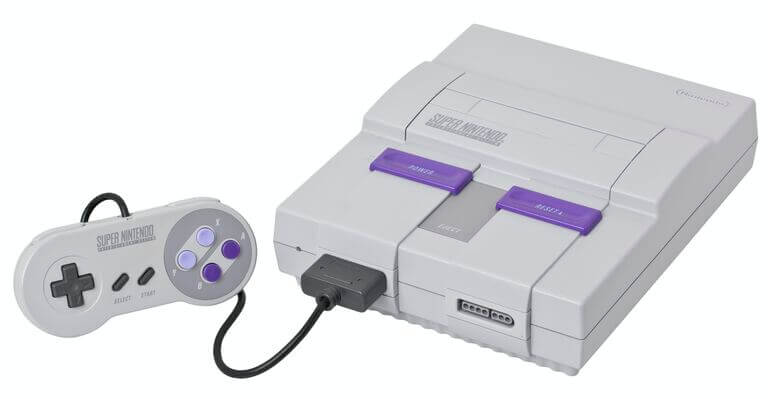
Nintendo's successor to the NES arrive just over five years later, and it came to play. Juiced up with 16-bit graphics, the SNES further solidified Nintendo's place at the top of the pile. It faced some stiff competition with the Sega Genesis that arrived a few years before it, but the strength of Nintendo's brand and IP allowed it to still come out on top. The SNES is the best-selling console of that generation, with 49 million units sold.
Some iconic games from this generation:
Super Mario World
Donkey Kong Country
Earthbound
Super Metroid
Yoshi's Island
1996 - Nintendo 64

When gaming began to move away from the 2D graphics of generations past, Nintendo met the challenge with a powerful new console: the Nintendo 64. The N64 went up against the PlayStation One for one of the best battles for console supremacy in history. It wasn't the best-selling console of that generation - not by a longshot - but it's still highly regarded among people who were there to experience it. The N64 sold 32.9 million units.
Some iconic games from this generation:
GoldenEye 007
Star Fox 64
Super Mario 64
Pilotwings 64
Donkey Kong 64
2001 - GameCube

Having more or less "lost" the previous generation of consoles, Nintendo came out of the gate swinging on the next one. Brand-new marketing, a console that was effectively more powerful than the others that were available, and classic Nintendo first-party support. That's what the GameCube promised, but it unfortunately wasn't enough despite launching even more Nintendo franchises that are cornerstones of gaming today. The console sold 21.7 million units.
Some iconic games from this generation:
Super Mario Sunshine
Super Smash Bros. Melee
Metroid Prime
Animal Crossing
Pikmin
2006 - Wii
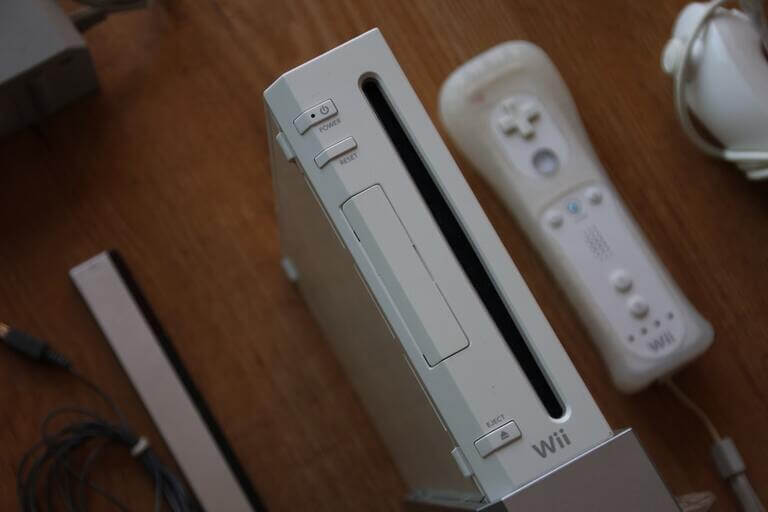
Rather than target the same market as Sony and Microsoft, Nintendo decided to do things a little differently for the next generation. Believing that the "casual" gamer market was being underserved, they created the Nintendo Wii. And in doing so, they released one of the most successful video game consoles of all time. Children, parents, grandparents, entire families were able to enjoy the Wii thanks to its unique, intuitive input methods, and that meant just about everyone wanted one. The Nintendo Wii sold 101.6 million units, eclipsing every other console it had made.
Some iconic games from this generation:
Super Mario Galaxy
The Legend of Zelda: Twilight Princess
Super Smash Bros. Brawl
Wii Sports Resort
Mario Kart Wii
2012 - Wii U
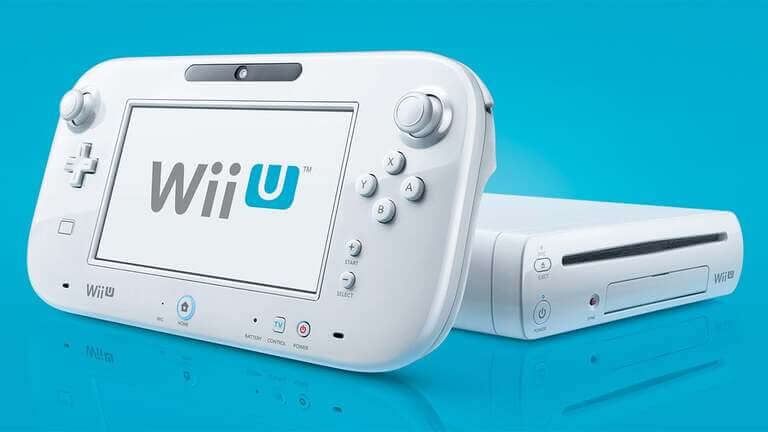
Having nailed the previous generation, Nintendo was ready to try something a little outlandish for generation eight. What they came up with was the Wii U, a direct successor to the Wii that utilized many of the same peripherals, but came with a twist: the "Wii U GamePad". This tablet-like screen with built-in controls could be used in a number of ways, but unfortunately it didn't save the Wii U from a terrible fate - it only sold 13 million units worldwide. It did set the stage for what would become their most successful console of all time, however.
Some iconic games from this generation:
Mario Kart 8
Pikmin 3
Super Mario Maker
Donkey Kong Country: Tropical Freeze
Splatoon
Handhelds
1980 - Game & Watch

Nintendo's first foray into the handheld game console business was the Game & Watch series of devices. Each device featured a game with two modes, as well as a clock and an alarm, hence "Game" and "Watch". These devices inspired the creation of the Tiger Electronics handhelds that were more recognized in the West. The Game & Watch line sold 43 million units worldwide, and its clamshell, dual-screen design would eventually become a major part of Nintendo's design philosophy.
Some iconic games from this generation:
Super Mario Bros.
Zelda
Mario's Bombs Away
Pinball
Donkey Kong Jr.
1989 - Game Boy
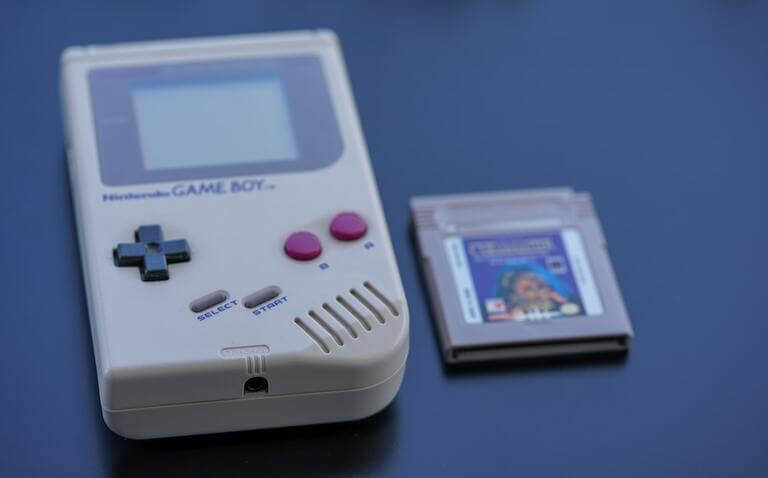
With the Game Boy, Nintendo created a market-dominating handheld that would stand the test of time. It was cheap, durable, and super fun. By utilizing a cartridge game system similar to what home consoles were working with at the time, the Game Boy could play many games, rather than the single built-in game of the Game & Watch devices.
Some iconic games from this generation:
The Legend of Zelda: Link's Awakening
Tetris
Kirby's Dream Land
Pokémon Red, Blue, and Yellow
Super Mario Land
1995 - Virtual Boy
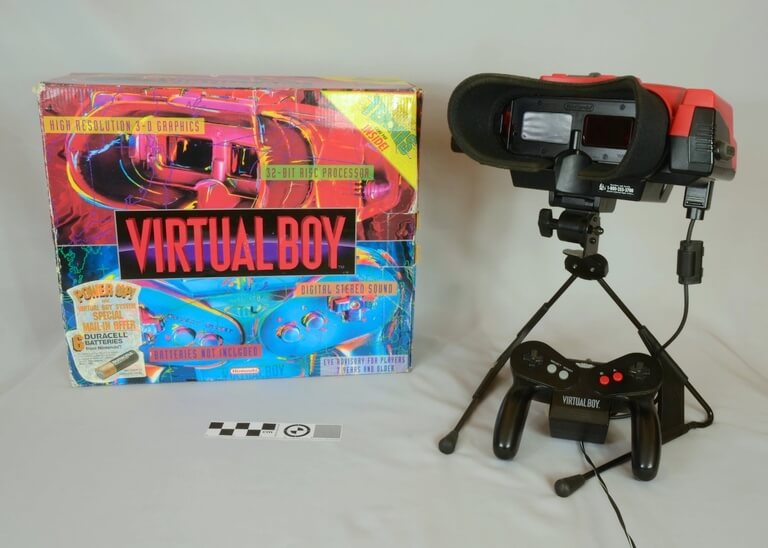
With the Game Boy selling gangbusters, Nintendo decided to venture out and make something a little weird. Their Virtual Boy was essentially a handheld system, but it ate up batteries and could only be used stationary. Perhaps they believed that it would sell based on its "virtual reality" implementation alone, but that didn't really pan out. It only sold 770,000 units across every market it was available in, and Nintendo has largely disowned it since its discontinuation a year after it was released.
Some iconic games from this generation:
Virtual Boy Wario Land
3D Tetris
Panic Bomber
Mario's Tennis
Teleroboxer
1998 - Game Boy Color
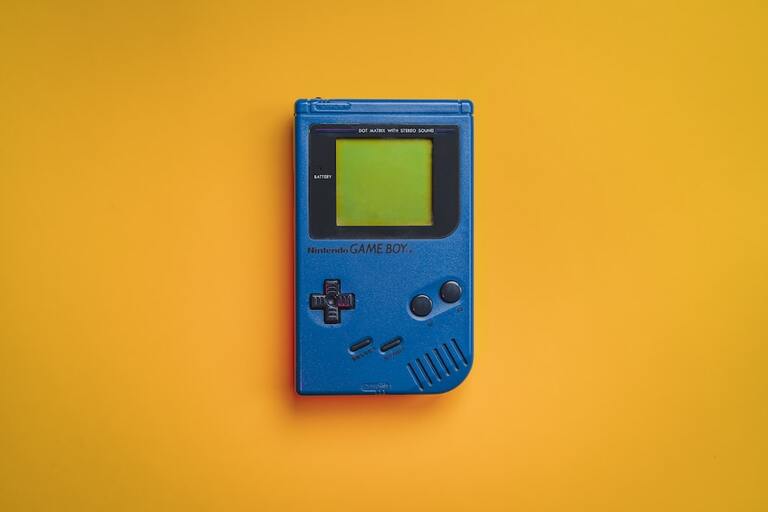
Arriving nine years after the original Game Boy was the Game Boy Color. It got a slight processing power boost and a full-color screen, and that's really all it needed to get a boost over the monochromatic screen of its predecessor. However, it was considered to be a revision rather than a true successor, so the sales numbers of the two handhelds have been combined. Is that cheating? We aren't at liberty to say, but the numbers are definitely impressive. The Game Boy and Game Boy Color sold 118 million units worldwide.
Some iconic games from this generation:
Wario Land 3
Super Mario Bros. Deluxe
Pokémon Gold/Silver/Crystal
Donkey Kong Country
Mr. Driller
2001 - Game Boy Advance
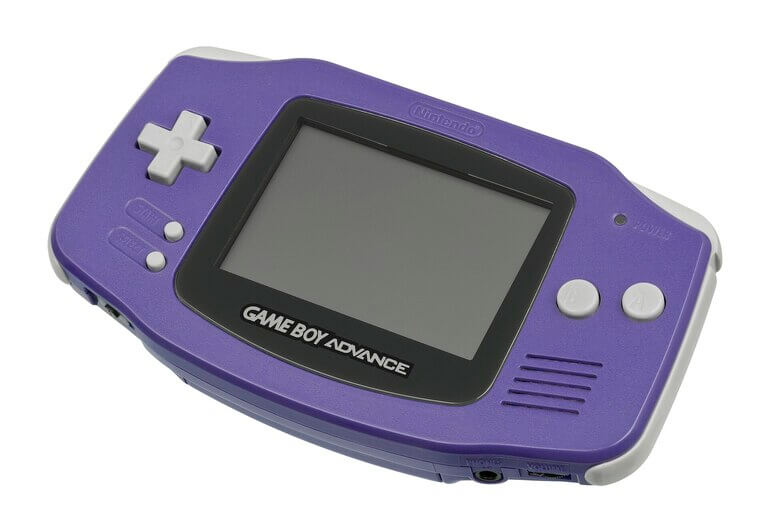
With twelve years having passed since the release of the original Game Boy, Nintendo thought it was time for the next generation of handhelds to hit the scene. Enter the Game Boy Advance - a new form factor, new cartridges, and a significant tech boost gave this device the legs it needed to get some of the most beloved handheld games ever. It received upgrades in the form of the Game Boy Advance SP and Game Boy Micro, all of which sold 81 million units worldwide.
Some iconic games from this generation:
Metroid: Zero Mission/Fusion
Mario & Luigi: Superstar Saga
Advance Wars
F-Zero: GP Legend
Super Mario World: Super Mario Advance 2
2004 - Nintendo DS

The Game Boy Advance had a comparatively short lifespan, as the Nintendo DS was launched just three years later. This new device hearkened back to the Game & Watch handheld designs, being a dual-screened handheld. Featuring a bottom touch screen and new input methods such as a built-in microphone, the DS line allowed for new and interesting ways to play games. Along with its revisions the DS Lite and DSi, the line sold 155 million units.
Some iconic games from this generation:
Mario Kart DS
New Super Mario Bros.
Animal Crossing: Wild World
Kirby: Canvas Curse
Pokémon Black and White
2011 - Nintendo 3DS
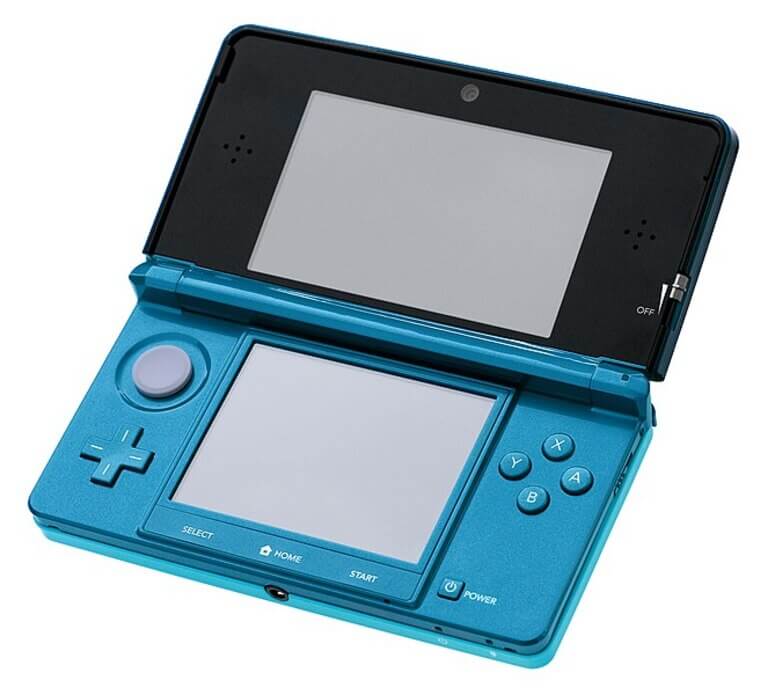
Unlike the Game Boy Color, the Nintendo 3DS was not a revision of the DS. Instead, it represented an entirely new generation, and one that would launch handhelds forward quite a bit. With near console-level graphics, the 3DS took the world by storm after a rocky launch. Its glasses-less 3D capability would go largely unused. It maintained the trend of console revisions, receiving five before production ceased on the line in 2020. Collectively, they sold through 42 million units.
Some iconic games from this generation:
Super Mario 3D Land
The Legend of Zelda: A Link Between Worlds
Fire Emblem Awakening
Pokémon X and Y
Animal Crossing: New Leaf
2017 - Nintendo Switch

Finally, we reach the current success story for Nintendo. With the failure of the Wii U and their handheld line propping them up, the company decided to combine their development teams to create a hybrid console to end all other Nintendo products. The Nintendo Switch - a powerful handheld that can be connected to a dock for a full home console experience. It has been an unmitigated success, with 129 million units sold worldwide. As of this writing, there is believed to be a successor waiting in the wings.
Some iconic games from this generation:
The Legend of Zelda: Breath of the Wild
Super Mario Odyssey
Super Smash Bros. Ultimate
Metroid Dread
Animal Crossing: New Horizons
The Evolution of Nintendo Online Services
While Nintendo's online functionality still pales in comparison to PlayStation and Xbox, they have come a long way.
The first implementation of a digital store arrived alongside the DSi, in which players could download bite-sized new games and applications for the camera-equipped handheld. That store piggy-backed Nintendo's "Nintendo Wi-Fi Connection" system developed for DS online multiplayer and internet access.
The Wii console received an evolved online storefront in the form of the Wii Shop Channel, a digital distribution app that allowed for the download of WiiWare and indie games as well as a number of other "channels" and games directly to your Nintendo Wii systems. While rudimentary, the Nintendo shopping services got the job done.
The largest technological leap in Nintendo's online strategy came in 2012 with the Nintendo Network, which served as the groundwork for the Nintendo eShop. That service was created for the Wii U and 3DS, but still endures on the Nintendo Switch. The Wii U and 3DS versions of the eShop will be discontinued in April 2024 due to the closure of the Nintendo Network, but the Nintendo Switch version will remain for some time to come.
Now, the Nintendo Switch uses the Nintendo eShop along with Nintendo Switch Online to create a more robust online experience designed for your Nintendo hybrid. Currently, the eShop requires a payment method to be attached to your account for subscriptions and game purchases, but you can also fill your digital wallet with Nintendo eShop gift cards.
These come in a variety of denominations, including:
$5 Nintendo eShop gift card
$10 Nintendo eShop gift card
$20 Nintendo eShop gift card
$35 Nintendo eShop gift card
$45 Nintendo eShop gift card
$50 Nintendo eShop gift card
$70 Nintendo eShop gift card
$99 Nintendo eShop gift card
Regardless of how much money is in your Nintendo account wallet, the eShop is the place to go for all of your classic and indie games as well as newly-released digital games. And, if you're looking to give the gift of fun at a reasonable price, Gameflip has a Nintendo eShop card with your name on it!
What is Nintendo Switch Online?
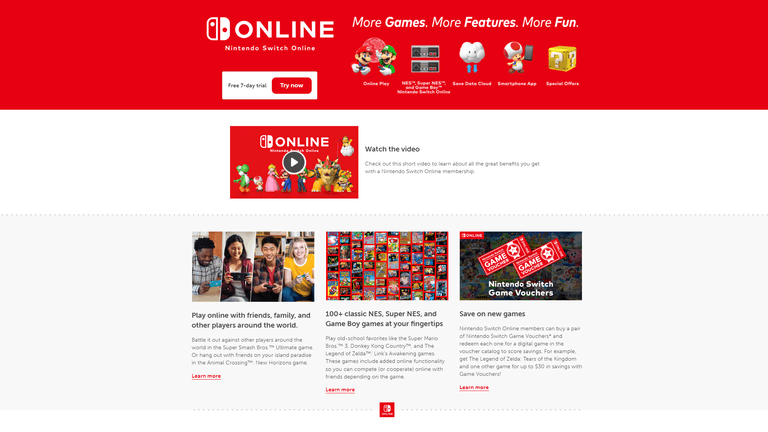
Nintendo Switch Online is Nintendo's current online gaming service, and their first subscription service of this type in the company's history. The third generation online service has much more functionality than the previous two.
This base version of Nintendo Switch Online launched after the Switch console itself, giving early adopters basically a year and a half to test out the Switch's online infrastructure. In 2021, Nintendo began offering an extended tier of Nintendo Switch Online that included a handful of other perks for an increased fee.
Here is a breakdown of Nintendo Switch Online's current offerings (as of October 2023)
Nintendo Switch Online ($3.99 per month/$19.99 per year)
Online Play
Access to 100+ NES, SNES, and Game Boy Virtual Console games
Cloud save capability
Smartphone app for voice chat
"Special offers"
Nintendo Switch Online + Expansion Pack ($49.99 per year)
Everything included in the base tier
Access to Nintendo 64, Game Boy Advance, and Sega Genesis Virtual Console games
Access to DLC for Nintendo games is included in the cost of a subscription
There unfortunately is no way to pay for the Expansion Pack tier monthly for those who might want that option, as it can only be bought by the year. Thankfully, you don't need Nintendo Switch Online in order to enjoy the eShop, where you can purchase and download new games and applications at any time.
What are Some of the Most Popular Nintendo Switch Games?
The Nintendo Switch has been a monster of a success, and that's due in no small part to the awesome games that have released for it since its launch. Here is a small sampling of those games.
The Legend of Zelda: Tears of the Kingdom
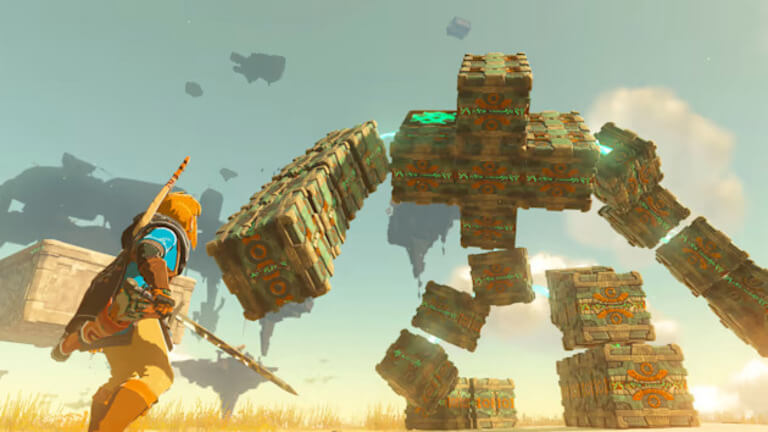
Developer: Nintendo EPD
The Legend of Zelda: Tears of the Kingdom marks the first instance of a direct sequel to a Zelda game in decades. With expanded gameplay offerings, a riveting story, and some of the most impressive programming work ever seen, this title is definitely one of many jewels in the Switch's crown.
Super Mario Odyssey
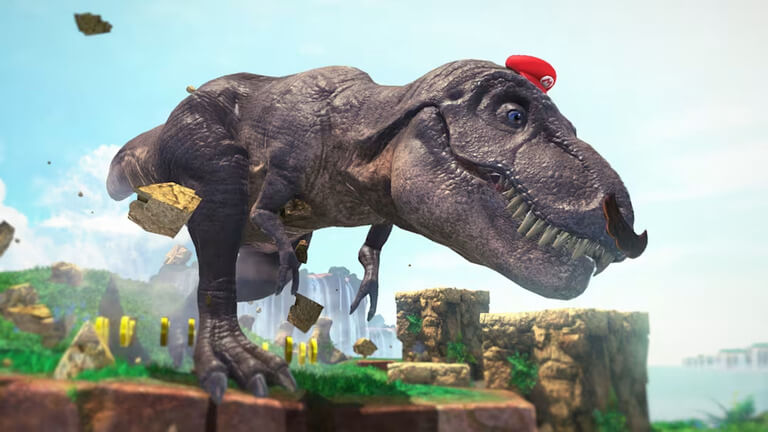
Developer: Nintendo EPD
Every Nintendo Console since the N64 needs a 3D Mario game, and Super Mario Odyssey was that for the Switch. It introduced the world to Cappy as well as a collection of weird and interesting worlds, all of which had some of the finest platforming gameplay in any Nintendo game.
Splatoon 2+3
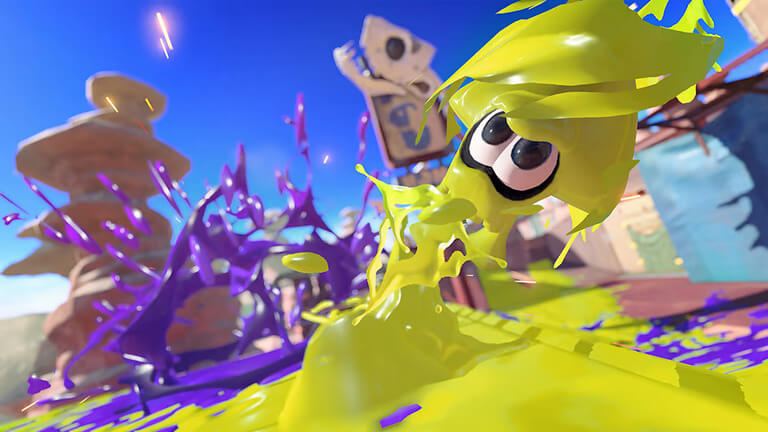
Developer: Nintendo EPD
Splatoon launched on the Wii U, but it was perfected on the Switch. The second and third games in the trilogy solidified Nintendo's multiplayer "shooter" as the family-friendly alternative to games like Call of Duty and Apex Legends. Plus, the squid kids are just delightful.
Pokémon Scarlet/Violet

Developer: Game Freak
With each new year, there is the inevitable possibility of a Pokémon game being unleashed from Game Freak's doors. In 2022, that meant Pokémon Scarlet and Violet, the first mainline games in the series to feature true 3D open-world gameplay with all of the bells and whistles fans have been asking for. It was released in a pretty broken state unfortunately, but patches have smoothed over the experience.
Mario Kart 8 Deluxe

Developer: Nintendo EPD, Bandai Namco
Mario Kart 8 Deluxe is the definitive version of the kart racer that released on the Wii U, and just about every Nintendo Switch owner has a copy of it. It is unfailingly fun, has great online multiplayer capabilities, and the Booster Course Pass has added a number of remixed and remastered tracks from previous games.
How Do Nintendo Gift Cards Work?
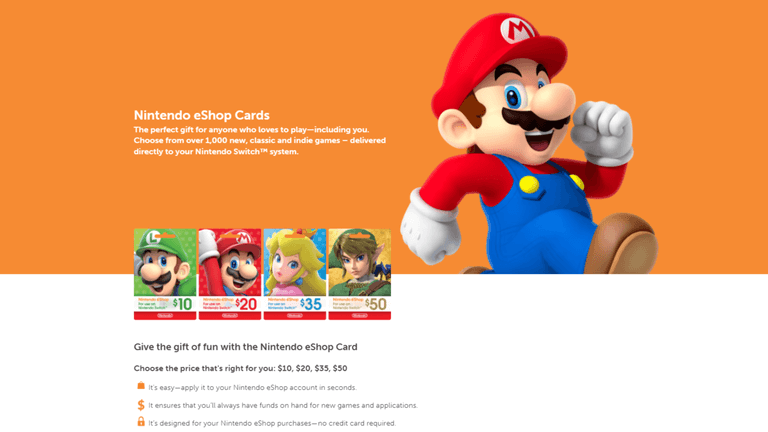
There are two different kinds of Nintendo gift cards: eShop gift cards and Nintendo Switch online gift cards.
Nintendo eShop gift cards - These will contain a Nintendo eShop gift code that will apply a predefined amount of currency directly to your Nintendo account's digital wallet. The denominations of these cards are as described in the previous section, and they are good for all Nintendo eShop purchases except for Nintendo Switch Online subscriptions.
Nintendo Switch Online gift cards - These cards will contain a code that applies a certain number of months to your Nintendo Switch Online subscription for either a single account or a family plan.
Here is a breakdown of the Nintendo Switch Online gift cards currently available:
Nintendo Switch Online 3-Month individual membership ($7.99)
Nintendo Switch Online 12-Month individual membership ($19.99)
Nintendo Switch Online 12-Month family membership ($34.99)
Nintendo Switch Online + Expansion Pack 12-Month individual membership ($49.99)
Nintendo Switch Online + Expansion Pack 12-Month family membership ($79.99)
These gift cards open up the entire Nintendo Switch ecosystem to you, and make the perfect gift for anyone who has a Switch console. Make a note of which type of Nintendo Switch Online code you have in your cart before you check out, because some are for a single Nintendo eShop account, while others the family memberships are for several.
Can I Buy and Sell Nintendo eShop Gift Cards on Gameflip?
Of course!
Gameflip is the premiere digital marketplace for all of your gift cards and other digital goods, and we welcome everyone looking to buy and sell Nintendo gift cards of any type.
For sellers, we have the infrastructure to ensure that transactions can be completed quickly and efficiently in addition to features like zero chargeback liability and escrowed payments. When you sell with Gameflip, you always have someone cheering you on and helping you achieve the success you're looking for.
And for buyers, you get to enjoy Gameflip-exclusive benefits with every purchase. This includes things like the Gameflip Guarantee, which ensures that all purchases you make on our platform are protected. If there's an issue with an order, or if something you bought doesn't work quite as expected, we'll do whatever we can to help you work it out. We know buyers are the backbone of any marketplace, and its in our best interest to keep you happy!
What makes Gameflip the Best Option for Nintendo eShop Gift Cards?
In addition to the benefits for buyers and sellers described above, what makes Gameflip the best option for buying or selling Nintendo gift cards - or any gift cards for that matter - is our robust marketplace. More than 6 million registered users, over 11 million items sold, and glowing reviews across the board can't lie!
But don't take our word for it, give Gameflip a try. You can make a Gameflip account in just seconds by clicking here, and then you're ready to be introduced to a whole new world of savings. Oh, and don't worry about your information. Gameflip complies with the strictest security standards for online marketplaces, and we offer extra security options like two-factor authentication for your peace of mind.
These are all of the things that make Gameflip the best option for Nintendo eShop gift cards as well as things like:
How Do I Redeem Nintendo eShop Gift Cards?
In order to redeem either eShop or Nintendo Switch Online gift cards, you're going to need an internet connection and a Nintendo eShop account!
You can register for a Nintendo eShop account in seconds through your Nintendo Switch system or by visiting the Nintendo website and registering there manually, but they have made the process pretty simple either way. And, since Nintendo has positioned itself as a family-friendly company, there are considerations in the process for younger gamers. If your account is registered as younger than 18, you don't need to have a credit card tied to your account. All of the information is there in the Nintendo account user agreement, but no one reads those. Great thinking Nintendo!
Once you have your Nintendo account, you can begin shopping for gift cards to apply to it. We recommend checking out the Gameflip marketplace for great deals on eShop and Nintendo Switch Online digital codes.
With your codes in hand, you can redeem them to your account through your Switch console by going to the Nintendo eShop icon and clicking on the "Enter Code" tab. That will bring up a text field where you can enter your 16-character code.
Alternatively, you could redeem your codes on the Nintendo website by signing into your account, clicking your profile image, and going to the "Redeem Code" page where the same 16-digit text field will appear.
After you've scoured Gameflip for the top deals on eShop digital codes and gone on to add funds to your wallet, you're ready to experience the Nintendo store in all of its glory.

Gameflip Guarantee
Get the item you paid for or your money back.
- Automatic Delivery: Some sellers use our Digital Vault or Steam Bots, which allow for the automatic and swift delivery of digital codes and in-game items. You can expect to receive these items almost instantly.
- 1 to 3-Day Delivery: In certain cases, sellers may opt for manual delivery, typically taking 1 to 3 days to complete.
- Immediate Post-Purchase: Right after you've made the purchase and while it's still in the processing phase, you can cancel it.
- Under Review Status: If your order is under review and marked with an “Under Review” status, you retain the option to cancel it.
- Seller Delivery Delay: In cases where the seller does not fulfill the order within the specified timeframe outlined in the listing description, you can cancel it after a 12-hour grace period.